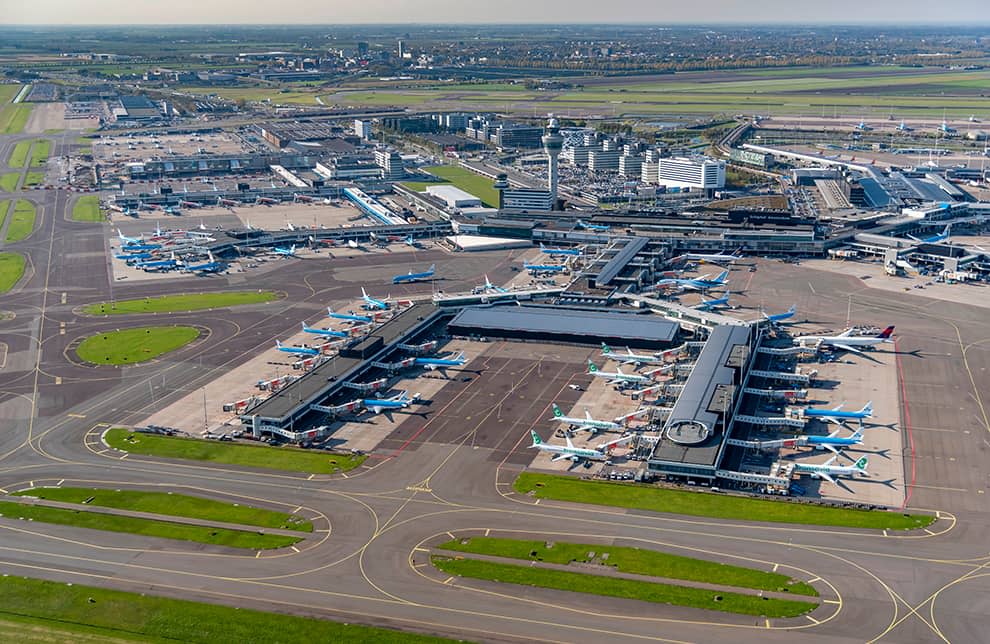September 2023
At Schiphol, a research lab has been opened at two aircraft stands on Pier D. The lab is full of equipment that can measure ultrafine particles and will be used to test measures and experiment with innovative ideas. The data and lessons learned of the research lab will be available for TULIPS as well. Additionally, Schiphol and NLR are preparing tests with an innovative water screen to mitigate ultrafine particles. This TULIPS demonstration is planned for coming autumn at Lelystad Airport.
24-hour monitoring
The research lab at gates D23 and D44 has been fitted with ten sensors that are monitoring the levels of ultrafine particles 24 hours per day. Through constant monitoring, Schiphol can learn more about the influence of the weather and other factors. At the same time, the airport can gain an understanding of the level of ultrafine particles present at an aircraft stand, which can even vary within an aircraft stand itself. This information will be used to improve the measures to minimise exposure to ultrafine particles.

Testing measures
Ultrafine particles are released into the air when an aircraft starts its engines or through the use of diesel-powered vehicles. Schiphol is working to reduce these emissions and aims to increase the distance between the source of emissions and employees working on the apron. This includes investing a lot in electric equipment to replace diesel. The airport is also making changes to the departure process for aircraft: from push-back to push-pull, for example. This involves pushing the aircraft back before pulling it slightly forward. The engines start up further away and the aircraft no longer needs to apply thrust in order to turn. At D23 and D44, Schiphol has been applying push-pull since this summer and can measure its effect.
Conducting experiments
The research lab can also be used to try out new things. Since scientific knowledge about ultrafine particles is still fairly limited, Schiphol intends to test promising innovations directly on the apron. For example, experiment with the use of ventilators in order to blow clean air onto the apron. They are exploring whether this method can be effective in removing ultrafine particles from the workplace.
TULIPS demo with innovative water screen
Not all innovative ideas to mitigate ultrafine particles are suitable for testing directly in the operation on D-platform. This applies, for example, to the planned TULIPS demonstration in which an innovative water screen is placed near an aircraft engine. The idea is that the water screen causes the ultrafine particles to precipitate along with the water droplets. It is a method that is successfully applied in mining to prevent the spread of particulates in the environment. We think this can also work for ultrafine particles and will test this at Lelystad Airport coming autumn, as part of the TULIPS programme. This demonstration is a collaboration between Schiphol and NLR.
For a healthy workplace and local air quality
By combining protective measures with research into exposure and health and wider experimentation, Schiphol together with partners is working to ensure a healthy workplace and improve local air quality.
For more information on ultrafine particles at Schiphol and measures taken check out the Schiphol website
Aerial photograph copyright Amsterdam Airport Schiphol
